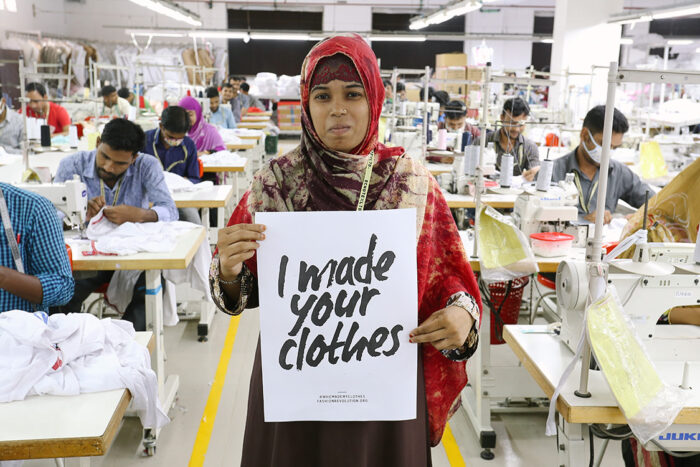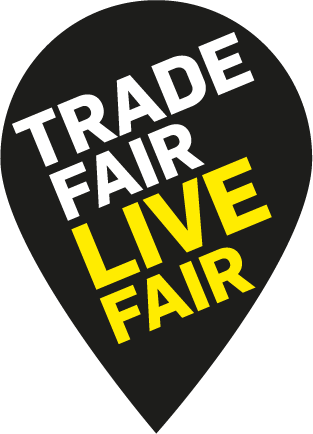CARE International is a humanitarian organisation fighting global poverty, with a focus on women and girls. From garment factory workers in South East Asia to domestic workers in Latin America, CARE is standing by vulnerable female workers to fight for safety, respect and equality. CARE believes that everybody, everywhere, has the right to work free from violence and harassment. But in 1/3 of countries, sexual harassment at work isn’t even against the law. This leaves nearly 235 million women vulnerable each day. CARE International’s global #ThisIsNotWorking campaign is calling on governments to vote for a binding international convention on ending violence and harassment at work. CARE also works with brands and garment factories to develop best practice for preventing and responding to sexual harassment in the workplace.
Below are two perspectives of garment workers from Myanmar and Laos, who told their stories to CARE International as part of Fashion Revolution’s #WhoMadeMyClothes campaign.
Khaing (33) – Myanmar

Khaing (33) helps support her family of six by working as a sewing machine operator in a garment factory in Myanmar. She has worked there since 2012 and enjoys the job, but is sick and tired of the harassment that the women workers face on a daily basis.
“Women feel unsafe because the male workers sometimes try to touch and hold them,” she says.
“I feel uncomfortable whenever the supervisor scolds us using rude words, when the mechanics sit and stare at the female workers and tease or make jokes about girls. Especially on Saturdays when they are wearing beautiful dresses.”
“I want to continue working in the factory. But sometimes I don’t want to go to work and I am upset by this. I don’t want my wages to be cut off if I don’t go to work.”
“I would like to be free from violence and discrimination in my workplace.”
Passionate about improving workplace conditions, Khaing become the trade union leader in her factory, and is now the President of the Women’s Committee within the Confederation of Trade Unions in Myanmar (CTUM).
“I teach other workers about sexual harassment and violence in the workplace at CTUM Women’s Centre. It is good practice to tell workers that sexual harassment is not acceptable. Women will feel safer in the workplace if managers tell this to the workers.”
Khaing says one of the biggest problems is changing the culture, as protection from harassment at work is not enshrined in law, so perpetrators often face no consequences and survivors receive no justice:
“There are no specific laws addressing sexual harassment and violence in the workplace in our country. Because of a lack of legal protection, there have been negative consequences for survivors of assault and harassment.”
As the workers’ representative, Khaing even travelled to Geneva, Switzerland in June 2018 to attend the International Labour Organisation (ILO) conference on Violence and Harassment in the World of Work, so she could learn more about improving conditions in her factory, and in her country.
“I am committed, as workers’ representative, to continue my efforts to lobby for the development of specific laws and policies to address violence and sexual harassment in the workplace.”
Hanlee (27) – Laos

Hanlee, 27, earns money working at a garment factory in Laos. She started out operating a sewing machine before becoming responsible for checking the products that come off the assembly line.
Hanlee dreams of opening her own sewing shop, but right now feels she has no choice other than to continue working at the factory to earn money. Sometimes she feels safe at work, but not always.
“It can be hard to be a woman. At work, sometimes there is sexual harassment like staring and rude comments.”
Hanlee feels most unsafe at the garment factory dormitory. She has no option but to live there because her home is far away.
“Once, the HR officer visited a female worker at the dormitory when she was sick and he harassed her,” Hanlee recounts.
He was fired, but Hanlee was still worried that something like this could happen to her.
“If I felt sick, I was scared about staying in the dormitory alone. Others who have relatives nearby go to stay with them if they are sick. If I had to stay at the dormitory alone I locked myself in my room.”
Her factory is now taking steps to stop sexual harassment from occurring.
“The factory talked about the importance of preventing of violence and harassment in the workplace and shared how they will respond to any cases that happen. If someone causes violence, they will be warned or fired,” she says.
“We feel safer and we also feel that management are concerned about us and our safety.”
***
CARE is working with the garment industry in four countries across South-East Asia to help make workplaces safer for women. We’re also calling for strong global legislation to ensure women are protected from sexual harassment in and around their work. Learn more about CARE’s work to address sexual harassment in the garment industry in South-East Asia: https://www.care.org.au/stop
Fashion Revolutionaries, a partnership between the British Council and Fashion Revolution, is a global programme – now in its second year – that spotlights individuals working from within the fashion industry advocating for vital changes to be made towards a more responsible and sustainable future for all.
For Fashion Revolution Week we’ve spoken with 3 London based pioneers who introduce us to their methods and processes which are challenging the status quo within the fashion industry and carving new, industrious ways of creating clothing, encouraging us all to become more aware of our impact and how to utilise creativity and craft to counteract the damage we’ve been inflicting for so long, to both people and planet.
Designer and activist, Katharine Hamnett talks us through the past 30 years of building a sustainable and conscious brand while simultaneously campaigning for social, environmental and political changes.
Founder of Higher Studio and coordinator for Extinction Rebellion, Sara Arnold, talks to us about circular economy, a sustainable business model for the fashion industry that uses rental to reduce waste, the carbon footprint of the industry and to encourage creativity.
Up-cyclist and designer, Matthew Needham introduces us to how he takes things perceived as worthless and transforms them into pieces of luxury fashion using artisanal skills and craft.
[youtube v=”wTNPtirmCxk”]
We are Lucy and Yak, www.lucyandyak.com an ethical business working towards being sustainable. We are mostly known for our organic dungarees and coats made from recycled plastic. Caring for our staff is the most important thing to us. Lucy and Chris, the cofounders, are always popping to and from India where we have our factory and have a very close friendship with the tailors. If you have any questions, you can email Lucy at lucy@lucyandyak.com. We have attached some pictures from India, too!
Our ethical, dungaree loving, comfort driven clothing brand, Lucy & Yak started out in a van in the wilderness of New Zealand with only two poor travellers, a pair of sewing needles and some old clothes.
How did Lucy & Yak begin?
Lucy and Chris were two stray travellers who were in need of some money to continue exploring the world (as well as stay alive), so they started to collect leftover clothes from hostels and make something people could take away with them and use over and over again.
It all started with tobacco pouches. People started to buy them (sometimes only selling 2 a day) and months later, Lucy and Chris would get people telling them how they had bonded with other travellers over the pouches. Already, the two were building a community.
The pair continued to travel around the world and their love of recycled, reused clothing carried on with them. They returned to the UK after 2 years of travel, still in need of money, but not wanting to work for anyone else, they decided to buy a van (A.K.A. Yak). They lived in Yak for 12 months travelling around the UK. They would collect clothes from charity shops and use the van and Depop to sell them on.
As they sat together one night in Yak, the dungaree conversation began. Where are the comfortable dungarees at? And what happened to the baggy trousers of the 90s? They got creative and drew their ideal design of dungarees – these are now what we know as the Originals!
And that was it. They went travelling again, knowing in the back of their mind they wanted to create some dungarees, but mainly just to spend more time doing what they love. They went to India to explore, but knew if they met the right tailor, they would have a go at creating some dungarees.
Who makes our dungarees?
Lucy and Chris wanted to make dungarees and that was all they knew at this point. But to do it any other way, than to treat people fairly, was just not an option. There was no great business plan to create an ethical or sustainable brand, they just wanted to buy a few pieces, sell enough to earn them £100 per week and also enjoy spending time with the person who was making them.
Lucy was in Rishikesh just hanging about, doing a bit of yoga when she bumped into a couple of friends that they had met in New Zealand all those years before. They told her of a town in Rajasthan that is home to a lot of amazing tailors. So she called Chris and the two of them headed to Pushkar. This was where they met Ismail.
Before meeting Ismail, they had samples made by a few other tailors, who had shops on the main market, but none of them would take them to see the factory where the clothing was made. Until they bumped into Muneer, Ismail’s brother, who took them out to his village to meet Ismail.
Ismail already had a small tailoring business with his two friends, Raju and DP and they shared the same values from the very start. In his own words, “No one is boss here, we are all the boss”. They just knew straight away, that these were their guys! It was like fate!
They got to work on making only a few pairs (30 to be exact) with no intention of becoming business owners – they just wanted to carry on travelling! Lucy modelled them, Chris took the pics and they shipped them over to Lucy’s Mum in Yorkshire. They popped them on Depop and they sold out in under one hour. One hour!
And so they made a website with more dungarees, working with their new pal Ismail. The official start of Lucy & Yak had begun!
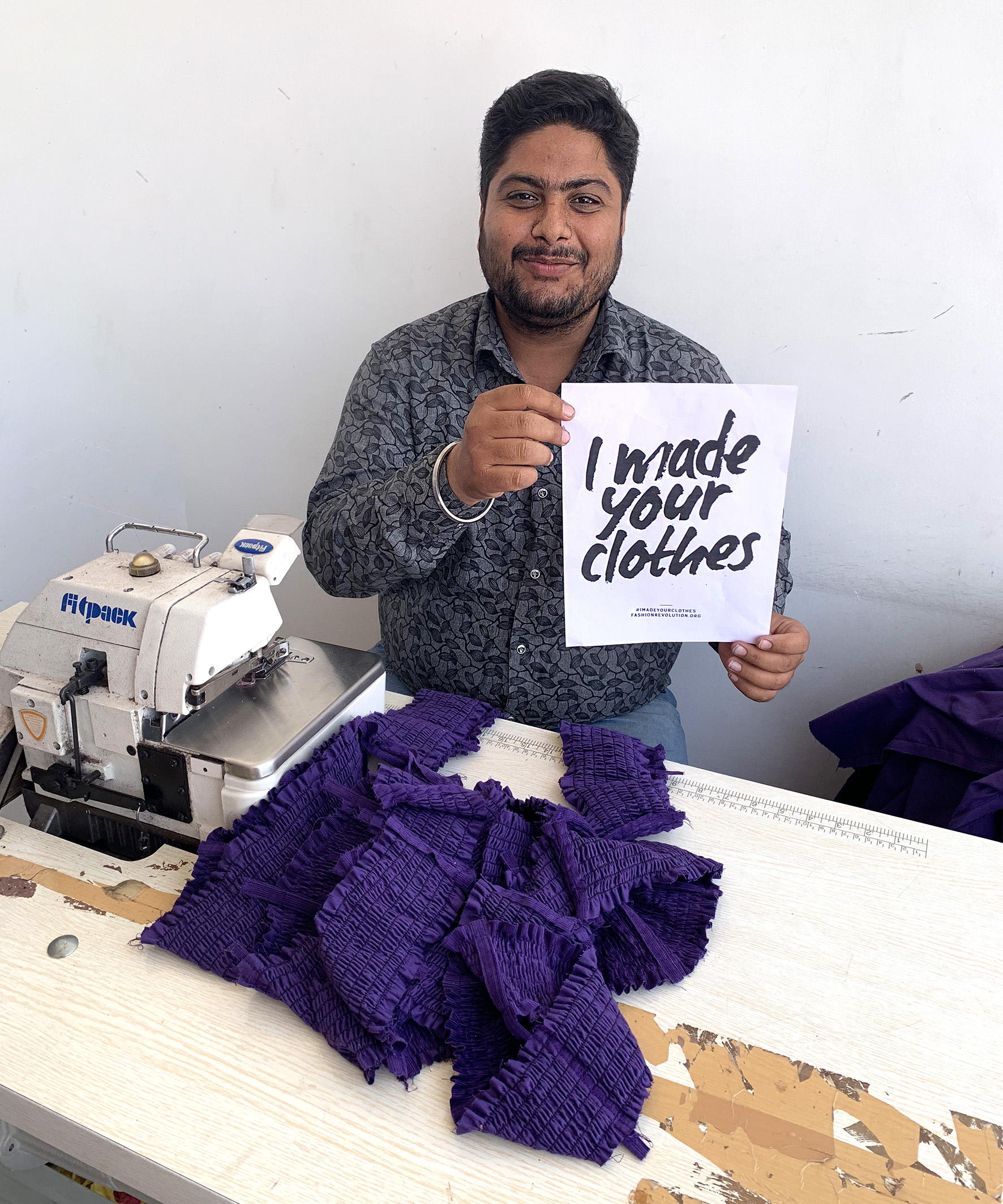
How much are they paid?
But then came the hard decision – working out how to make sure everyone was paid a fair wage! After extensive research on what the cost of living in India is, they found out that the State of Rajasthan’s minimum wage for garment workers was: 6058 rupees for skilled workers and 7358 for highly skilled workers.
Ismail and their tailors already had the potential to earn 14000 rupees a month, if they had regular work. But it was rare that they got constant work, it came and went with seasons. They had little security. Ismail is a great guy, he is the one that went looking for work, he was also the master sample maker. So all of the money they made from each garment was split 50/50.
With Ismail’s 50%, he also took care of the running costs of the factory. So Lucy & Chris knew all they had to do to ensure that every one was paid well, was to make sure they paid a pair price for their garments. The first negotiation was so funny. Ismail still laughs to this day, as they negotiated the price up rather than down. He thought they just didn’t know how to haggle.
They did more research to understand what the the living wage was and for one adult to look after a family of 4 it would be the equivalent of £219 which is 4 times the minimum wage.
And so Lucy and Chris decided to make sure the tailors earn between 21000 rupees and 29000 rupees per month, depending on their skill level. This is the equivalent of £233 and £320.
We experienced a lot of quality issues in the beginning and still get some now, so instead of not paying for faulty garments, Lucy & Chris decided to implement a bonus scheme for the guys in India. If there are no tailoring faults, they each get 500 rupees extra a week. So that’s 2000 rupees extra a month! And honestly, it’s very rare that none of them get it. It just makes us so much happier to know that our workers aren’t struggling for money and can enjoy their lives, and that the quality of their work is constantly improving.
But where do they work?
Now it was about the environment the guys were working in. The team grew so fast, that they were all working in different places around Ismail’s village: Tilora in India. Some people were even working from their homes to help out!
There was nowhere big enough in Tilora for them to rent to get everyone under one roof. So the three of them made the decision to build their very own Lucy & Yak factory. It is completely owned by Ismail and his brother Peeru, but Lucy & Chris helped to fund the build.
Lucy and Chris popped back and forth between Tilora and Yorkshire to help Ismail and his brothers build the factory and finally, it was complete. Everyone was under one, air conditioned, solar panelled, renewably ran factory. This even meant that Ismail could hire more people!
Ismail also employed his first female tailors about 8 months ago, so we have a great team, of men and women. Ismail’s team has grown to 65 people, and as it continues to get bigger, we will face new challenges but we will always know that we have the best guy looking after our production. He cares about people, he really made this easy for us.
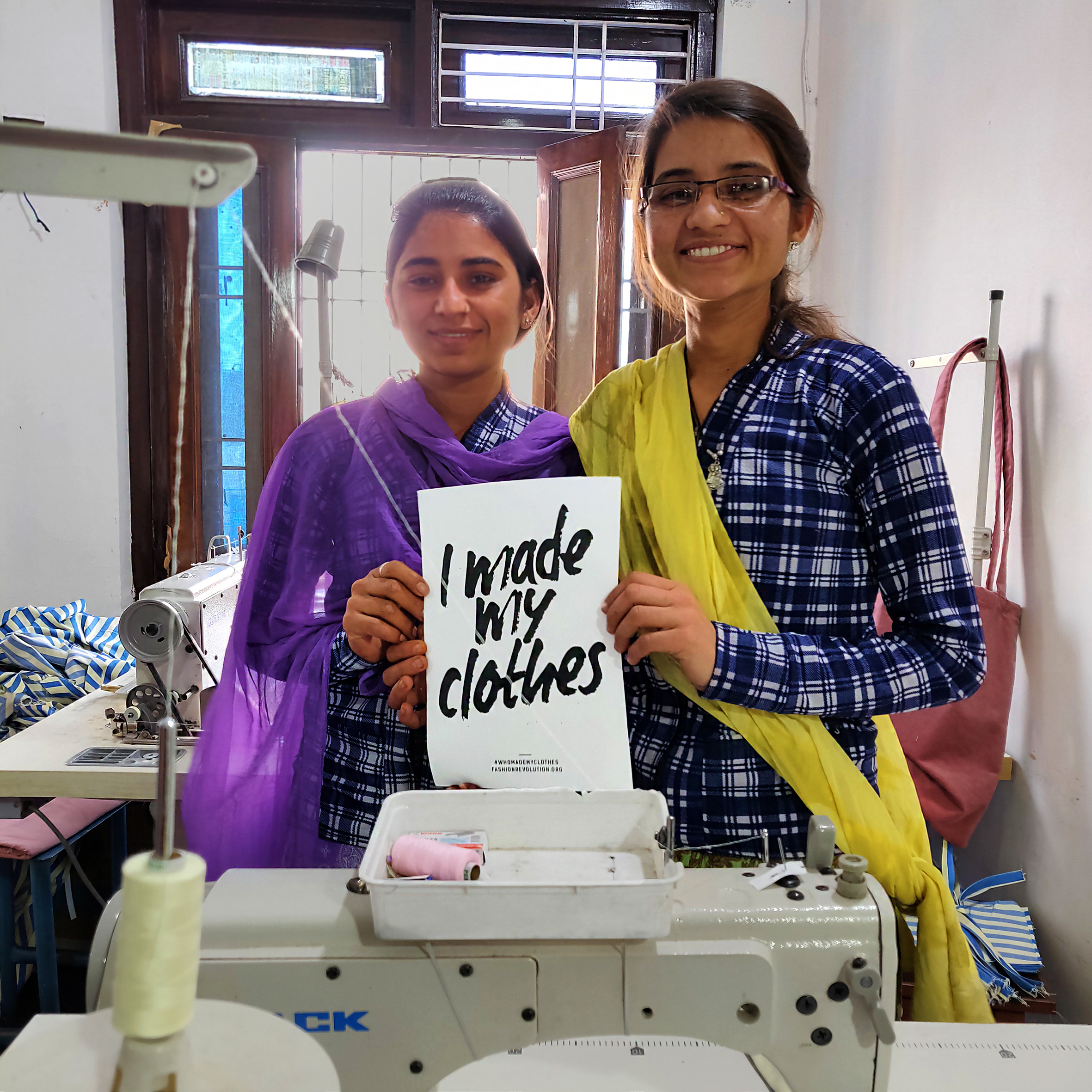
What now?
We have the team here in the UK and the team there in India and we continue to do what we love! We are always coming up with new designs, we always make sure our staff are treated fairly and try our best to look after the environment as much as we can along the way – we even make clothes from recycled bottles now.
We are working on a small made in Britain collection, to run alongside our India collection. And we also have some exciting news about how we can create a circular fashion model for Lucy & Yak in the future.
As we grow as a company, we are still learning. But the upmost importance to us, is making sure everyone who works for us is being paid fairly and that the environment they work in, is the best it can be.
To find out more, head to www.lucyandyak.com
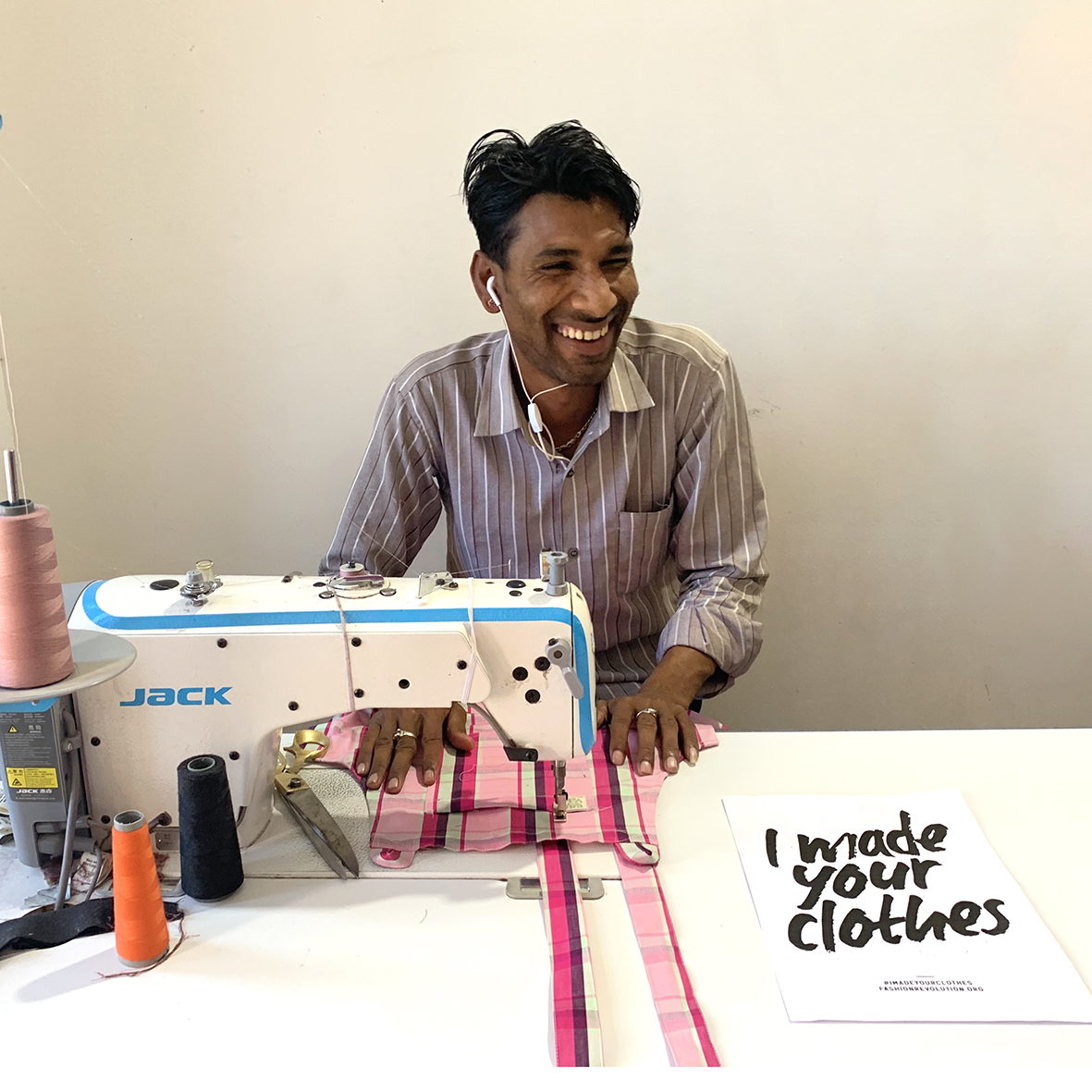
For Cedric Mizero, a self-taught artist and designer in training, the problem is access. Life in the rural village in Rwanda where he grew up, a 7-hour drive from where he now lives in Kigali, is changing rapidly – and sometimes not for the better. His sculptural ball gown beautifully crafted entirely from red and white capsules containing some form of medicine, is his protest about how his little village in the middle of nowhere has been flooded over the last few years with western medicines. You might think this is a good thing, but these drugs, available to buy freely over the counter of everyday shops, come packed in boxes with instructions, descriptions, and warnings all in English. Nobody in his village can read English but they take the tablets anyway, thinking they are preferable to the herbs and tinctures they have traditionally ground up to treat fevers and illness. “My mother was taking these pills until she became very ill and had to visit a doctor in the city who told her to stop taking them as they were making her sick!” says Cedric.
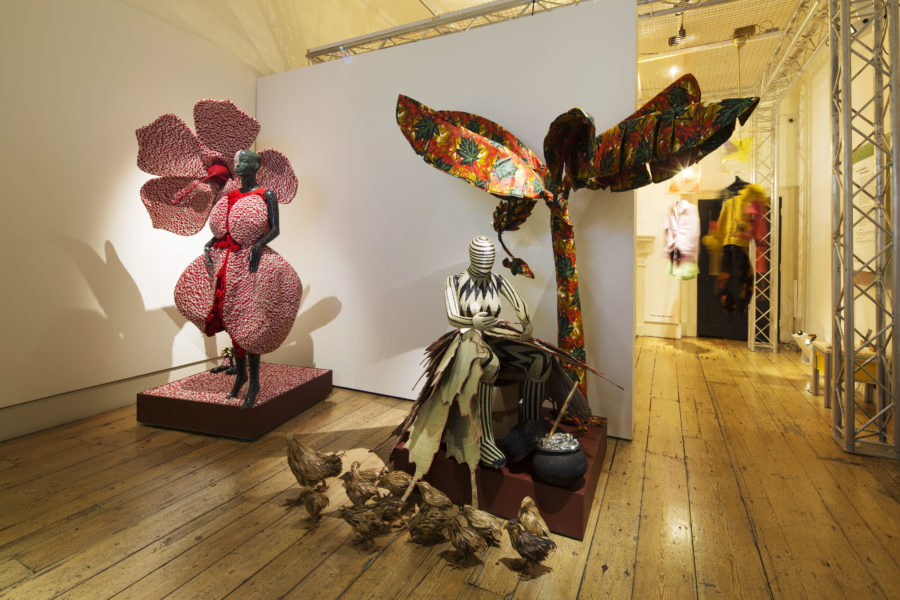
Access to western products, whether random medicines or iPhones is not always the route to progress. The tiny black and white plastic beads are imports too – most likely from China. But at least now Cedric can use them to entirely cover a Made in China mannequin in his village’s traditional beadwork. “In the past five of these beads would be enough to buy a slave,” he says. Always a creative child, Cedric was taught to knit by his mother. Instead of traditional wool, he would use banana leaf fibre or the excretions of an insect which, he explains, made a thread strong enough to knit from. There are a lot of references to banana plants in his installation. He has even used them to weave a beautifully expressive family of a hen and her 12 chicks, representative of his own family. He is the one walking in the wrong direction.
For other designers showing as part of the International Fashion Showcase: Brave New Worlds The Changing Landscape of Fashion, the challenge is excess. The designers representing Netherlands, Vietnam, India, and Lebanon all address the issue of over production and waste. Naushad Ali who works in Pondicherry in south India, calls his collection Garbage, taking scraps of fabric otherwise destined for landfill, dyeing them with natural indigo. He uses a range of ancient craft techniques from weaving to crochet and patchwork to create a collection of precious, hand-made pieces that will be treasured forever.
For Tom Trandt who studied at Parsons in New York before returning to Vietnam to launch his brand Moi Dien in Saigon, there was a political message in his A Quiet Scream collection which became glowed under UV light showing how clothes can give their wearer a voice. In Vietnam, where dissent is illegal, young people write slogans on the backs of their clothes so they are visible only from the back. It’s a risky business and they might only wear the slogan for a day for a post on social media to make their point. Trandt is also conscious of Vietnam’s role as a “factory for the world”, and is shocked by the amount of waste left behind in his country from the overproduction of western brands. His collection is made using zero waste cutting techniques and he pieces together strips of waste fabric to make his clothes.
In Beirut, Roni Helou works directly with his clients making new clothes from deadstock fabrics. He is a graduate of Creative Space Beirut which is an NGO providing free education in fashion design. He describes himself as an activist and his work is all based around the relationships he builds both with the factories that give him their ends of rolls and deadstock textiles otherwise destined for landfill and the women he collaborates with in the process of making bespoke pieces for them. In Lebanon, as in much of their world, there is a build up of rubbish and he campaigns for environmental and animal rights. Veganism is still a minority movement in Lebanon but Helou uses his position to talk to his clients asking them questions like where they think the fur on their bag charm came from, he likes to start them thinking about the provenance of their clothes and the materials they are made from.
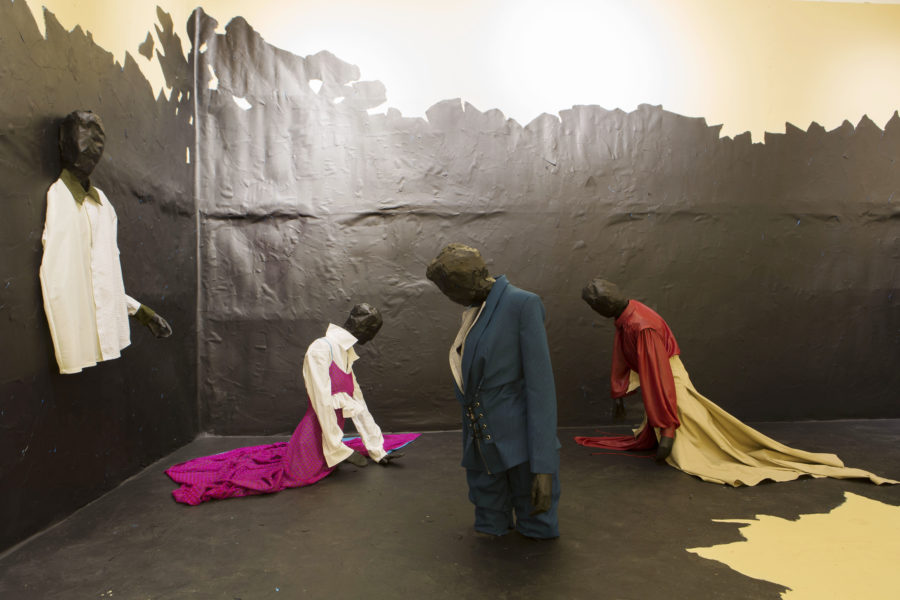
Duran Lantink (the man responsible for Janelle Monae’s vagina trousers for her PYNK video) the designer representing the Netherlands, calls his collection Straight From the Sale Bins and his commentary is around Black Friday and over consumption as well as over production. His clothes and accessories are collages of used clothes, mostly branded, designer pieces – his logo is made up from letters from different brands – he finds in second hand shops and online. Liberty gave him fabrics and are hosting a pop up installation for him in March.
“I think the main problem is over production and over consuming. People say that fashion is dead but that’s not true. It’s more the way it is sold is dying. We are not supposed to have everything available at any time at the lowest price. That’s just not how it was meant to be. Somehow in this world it went wrong and it’s now a good time to show different ways of working.” His solution, as well as making collages of old, damaged or unwanted clothes which he makes on demand everytime a store sells something, is to create a service where clients can send him pictures of pieces in their wardrobe they no longer want. He will create a collage of those clothes and send the idea back for approval and then he will work with seamstresses at centres around the world where you can send your pieces locally to be expertly made into something new.
When I ask if his upcycled aesthetic is enjoying a fashion moment right now, he says it is, but he has been working in this way since starting at Rietveld Academy in 2011. “You have these charity shops full of clothes, why would you make something new?” This is not a trend. “This is my method,” he says, “I can’t imagine working any other way.”
Every one of the sixteen designers in the showcase has something so relevant to say, a reflection on their place in the world. Their installations are testament to the mentoring they received from London College of Fashion, designer Christopher Raeburn and journalist and BFC Ambassador for Emerging Talent, Sarah Mower. “I learned so much about national and political issues in countries I’ve never visited from getting to know these designers,” she writes in her notes for the show. And that, surely, is what fashion at its best should be about.
International Fashion Showcase 2019 – Brave New Worlds: The Changing Landscape of Fashion is at West Wing Galleries, Somerset House, London until 24 February. www.internationalfashionshowcase.com

In November, Fashion Revolution caught up with the founder and CEO of Outland Denim who was in London for the Stop Slavery Awards which were part of the 2018 Trust Conference. Outland Denim was shortlisted for an award, the only fashion brand on the list. Apple won. But Outland Denim, which was set up to provide meaningful employment – and in many cases, liberation from the sex trafficking trade – for vulnerable women in Cambodia won the ultimate prize this year when the Duchess of Sussex chose to wear their jeans on several occasions during her visit to Australia and New Zealand in October. The Markle sparkle resulted in her high rise jeans selling out and the brand’s socially responsible #zeroexploitation hashtag being talked about around the world.
In tangible terms, the brand was able to employ 15 more women almost overnight. The Markle effect opened doors in the most positive way, and highlighted not only the power – the responsibility – women like Markle have to spread the right message through their clothes, but also how a brand with a true mission to use fashion for positive good is the only way to do business. We wanted to know more about what makes this business tick.
Tamsin Blanchard: So, how did Meghan Markle come to be wearing Outland Denim jeans?
James Bartle: I would have thought that someone with as much power as she has – and she’s very well aware of the power she has – would be very careful about the brands she would align with and why she would wear them. So for us we would like to think that:
1) she’s pregnant so she wore our product because it is comfortable and we saw her wear them time and time again on her tour of Australia, but also 2) because our brand values align entirely with her own personal ones.
TB: She would have found a message on the pocket inside, a signature of your product. Is that written by the seamstress who made the jeans?
JB: So there’s a range of seamstresses that will work on the product and would have chosen to write a message inside and it will be printed on the pocket. It’s a really powerful part of the product, especially when somebody buys it and doesn’t realise what’s behind the brand and one day they are washing their jeans and they read this message.
It’s about reinforcing the message we want to communicate – which is very similar to Fashion Revolution, it’s the same: Who Made My Clothes? How were they treated in the process of making your clothes? And then how has this product impacted the environment around it? That’s why we exist, to change some of the wrongs the fashion industry has created and be able to show there is a better way of producing fashion.
TB: And that would have really struck a chord with Meghan, I’m sure. It’s the idea you can love these jeans, they are really comfortable but every time you put them on there’s a ripple effect.
JB: On a social level there’s a massive ripple effect which flows out well beyond the goal of making. It flows out into families, it flows out into culture into the way its reestablishing dignity in this woman as she goes into the community. There are so many tentacles that come off being able to give this kind of employment to somebody and this framework around them to equip them to be successful.
It all comes back to the product and it has to be a beautiful premium product and nobody can be exploited in the process of that. We spent five years developing this before we launched our brand, it’s that stuff that sets a solid foundation that someone as incredible as Meghan Markle would choose to wear the product.
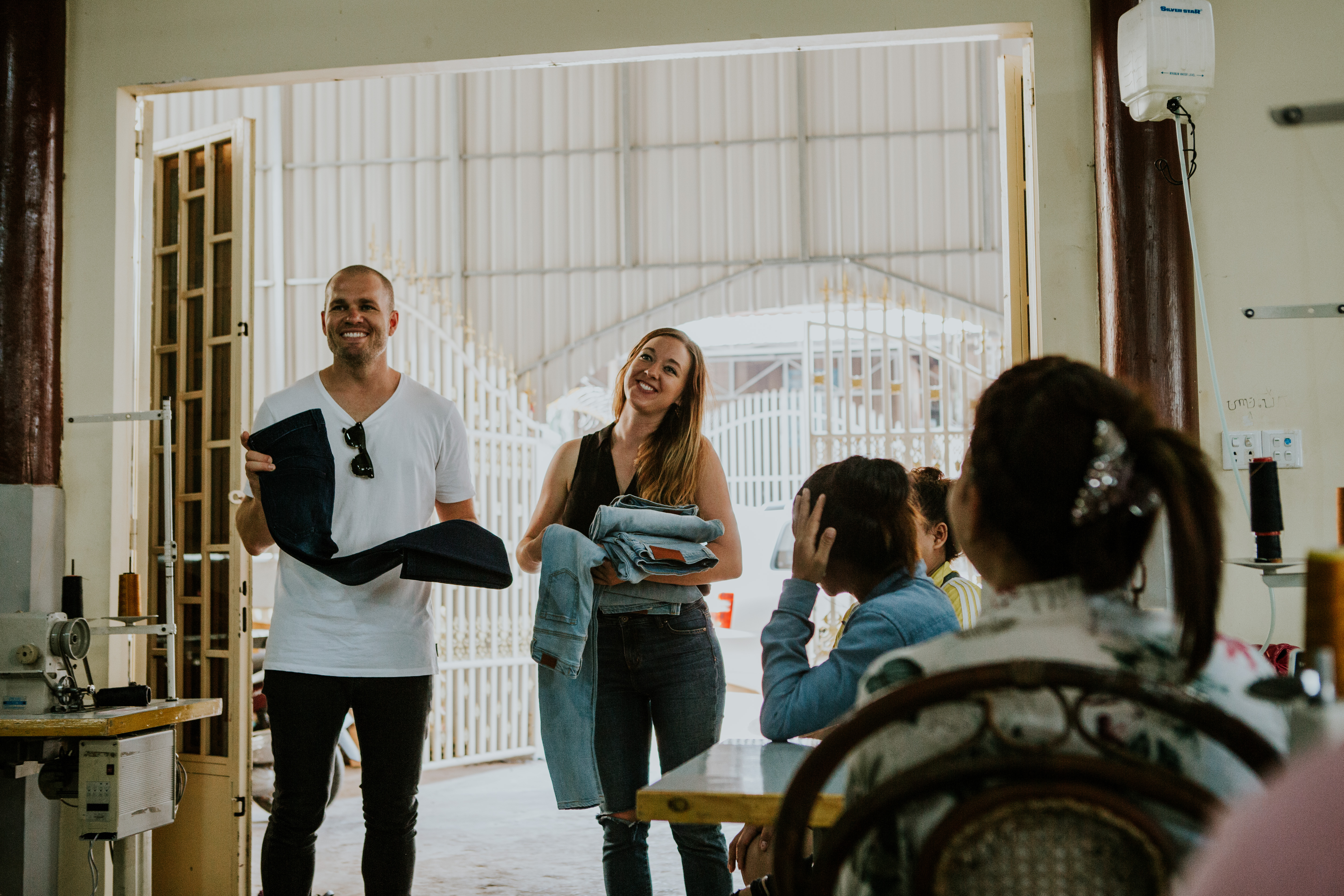
TB: What were the biggest challenges in those five years you took to set up the brand?
JB: So many challenges. Bringing a woman in who has no understanding of the fashion industry or the garment industry and teaching her to make one of the most difficult garments in the entire industry – and not just make a part of it but make the entire thing. That’s probably one of the most difficult things, getting quality where it needs to be.
But also, what’s the structure of our business model so it genuinely gives them the power to change their entire life? From the day we employed them we had to pay living wages which is different to minimum wages so its a huge cost to bring them in and train them over a two and a half year period into being able to make the entirety of a jean.
Then there’s education. We teach languages, about finance, budgeting, how to manage your money, all the way through to infant care.
Those four major pillars of our business model were the hardest thing to establish because we didn’t know what needed to be there and what didn’t need to be there.
We were over paying when we first started which created other issues. It’s very important to not pity the women and I guess we started in that way, we felt sorry for them and wanted to do anything to help them out but that wasn’t really helping. That’s like giving donations, although good, they are just Band-aids. We really wanted a business model that genuinely changed their lives, and this one does.
TB: What were the issues around over paying?
JB: On a micro level, that causes inflation. So you’re setting people up for failure: you are now used to earning way more than you will ever earn in this country and therefore you are dependant on us to be able to maintain the lifestyle you’ve now built so it was one of the most destructive things you could do. The key is living wages. That’s where you start. We have five different levels of pay and they are classified on things like punctuality, attitude at work, quality of work, speed of work and as they get better they move up that pay scale. So there is a genuine career to follow. And then they become section leaders, and managing sections of the facility and that’s a huge thing. They probably never thought they could have that opportunity which means now they could leave if they ever need to and go somewhere else and be more skilled than the competition they might face. It genuinely brings about cultural change. It’s insanely powerful.
TB: You are promoting women into leadership roles which has an amazing effect.
JB: We know that by giving women freedom and equipping them with the tools they need that will bring way more stability than equipping men. This isn’t something new. If that’s the desire for them we want to be able to facilitate that so they can enjoy those experiences as well.
TB: What is the living wage in Cambodia?
JB: In Cambodia it changes depending on the region you are in. We have two facilities you have one in Phnom Penh, the capital, which needs to be more there and then we’ve got one in Kampong Cham which is less.
Absolutely as you work your way up if there’s no ceiling to that, that’s fantastic. But you don’t just deserve that, it comes from hard work and commitment.
Kampong Cham is out in the provinces. If you set up in the city, a lot of these women are having to move to an area where they would not necessarily be able to go and see their family and often they will never see their family, it’s too far away. So it’s important to have it out there many as women come from that area still get to see their families. We’ve just opened the one in the city as well and that one is offering entirely different opportunities. In that one we have men working as well, whereas in the other one we just have two men.
The new one is a finishing facility, so we got a full team of experts. As we add people into the mix, they will learn way faster and we will have a better quality of product.
TB: And the experts are men?
JB: The experts are men because they come from the wash industry so we’ve got a guy who moved from Turkey who is working on R&D with washing and sustainability. As you know, washing is one of the worst parts of the whole process so to be able to adopt that along with the equipment we’ve bought in which is laser and ozone technologies, reducing water right down, reusing water versus discharging, working on plant based water filtration and management. The goal for us isn’t just how we minimise our footprint, it’s how do we eradicate our footprint? And until we all start looking at it from that angle, the problem will never leave.
TB: It’s so complex, to properly really think through every step of the way…
JB: It’s only hard for the first ones. How do we go and just recreate how it’s done and make that normal? And there are enough brands now who are saying we don’t think about it from an industry point of view of how it’s done. Our team were entirely inexperienced in this. We’ve got eight years experience now, which is so minimal but we haven’t been shaped by anything the industry has put to us. We had no idea how to do this and that’s been our strength.
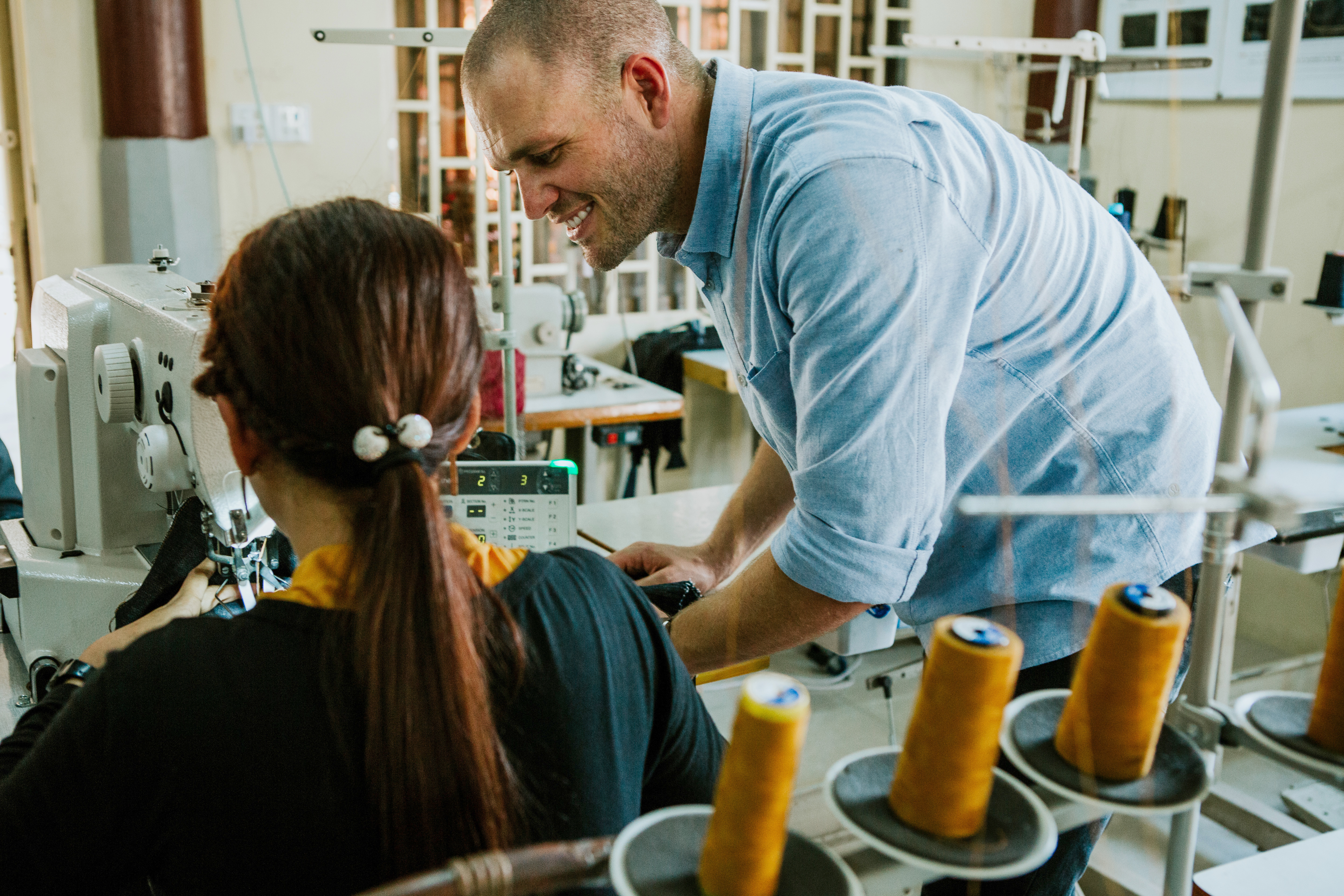
TB: Similar to the Veja story. They didn’t know how to make trainers and worked out what made sense from the start.
JB: Ignorance is good, it’s the reason we started in denim, we’d have never have done it otherwise. I didn’t even know denim was so bad for the environment, I had no idea when we started.
TB: In terms of your cotton supply chain, how do you know there isn’t any slave labour along the way?
JB: You will never ever 100 per cent know. That’s impossible based on the smoke and mirrors of not knowing the farmer who grew the cotton and it is always a possibility. For us we need to be able to follow the tiers all the way back so we work with Bossa Denim in Turkey so we can go to the broker and back to the farm. So we can visit farms. We have the addresses so we can go and visit, so as much as you can guarantee that much of the supply chain with the stage we are at with technology… at the Trust conference they were showing this incredible stuff from Planet – every 24 hours there’s a satellite image of the entire planet which means we could potentially watch a crop and the way it’s been harvested. Incredible! If we could pinpoint our farm and watch on a daily basis… we are also looking at Supima cotton based in US, DNA imprints on the fibres so we know it came from that farm. That still doesn’t mean there is no slavery or exploitation of somebody somewhere.
TB: But you are doing your damnedest to make sure…
JB: Zero exploitation is our hashtag and that’s our commitment. We will work until the day we die to make sure no one or anything is exploited in the process. And one of the realisations we had is that means the person who sells the product; that means the customer, we don’t want to exploit them for their money if it’s not a beautiful product; we don’t want the sales associate to take a smaller margin; we don’t want the influencer to not be paid for wearing our product and showing their audience about us. It makes it really expensive to do, but that’s how business should work. Good business, everyone wins.
TB: So with Meghan Markle, you hit the jackpot.
JB: Yes and it takes something like that for us to be able to help each other grow and grow this movement.
TB: It must have been so great for your seamstresses.
JB: Not that every woman who works for us has been trafficked. We will filter in women who have stable lives and that’s really important to making this powerful. But again because sex traffic is part of it, it’s a very shameful thing in Cambodia, people could automatically be labelled with that.
TB: Do you know how many women you have diverted from slavery?
JB: We have 75 seamstresses and a large percentage – 80 percent come from vulnerable backgrounds which could mean they have a disability or were on the street. The last intake was 15 women and girls and it will probably be more. They really were employed because Meghan Markle wore the product. And it’s not just because of a spike in sales, that would be ludicrous. It’s because of doors globally opening and some of that is forecasting from what will come from it.
TB: How did you deal with the spike in sales?
JB: Unfortunately you are not really prepared for that. If you were you could sell so much. But we were fine, no website crashed. We had things we had to sort out on the fly, we had to send an email to everyone who pre-ordered jeans to say ‘hey, really sorry they are not going to be ready ‘til April, we can give you a refund if you’d like it’. There were very few people that wanted refunds. People are still ordering. Sales have plateaued now but people are pre ordering product that isn’t yet available based on that she sold it out for us. She is incredible.
TB: It must be quite a responsibility for her. It’s a lot of pressure. While there are so many positive messages she – and other influential women – can spread through their clothes, you don’t want to be wearing the wrong thing either.
JB: I don’t know whether she’d really realised the impact. How could she? But the impact is so deep. I wish I could let her meet some of those women who are there because of her! I don’t know that she would know that. It’s insane.
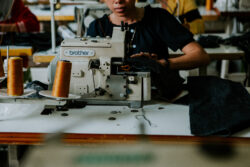
Aaaaand we’re back! Beth, Zahra and Jemma here from the ‘Who Make My Clothes?’ course. We don’t know about you guys, but this ‘Find Out’ Week 2 of the course has been full of highs and lows for us here in the course office. It turns out this question is harder to answer than we first thought. A simple google search just won’t cut it!
The week began with a surge of optimism – the sun was shining here in Exeter and we were raring to go. We looked at our garments (ready to find out anything and everything!) and were immediately confronted with so many options… do we look for the people involved in their assembly, embellishments, fabric? The possibilities are endless! We had to made some decisions, to dig deeper into one aspect of our garments’ stories. Just like a maze, we were stuck in the middle, trying to find a path, reaching dead ends, but eventually finding our ways out.
Beth ended up focussing on the process of distressing her denim H&M skirt in China. Zahra focused on the making of the buttons and seams in her Gap Pajamas also from China. And Jemma turned detective by trying the live chat feature on Zara’s website where she could talk to an employee about where elements of her garment came from. Customer helplines are helpful in theory… But, in practise, they weren’t as happy to chat as she was. In fact, they weren’t happy to chat at all, ending the conversation as soon as it had started (evidenced below)! Did they not know the answers? Or just not want to say? Either way, she had to go down a different route. Putting on her detective’s cap and grabbing her magnifying glass, it was time to make some educated guesses. Google here we come!
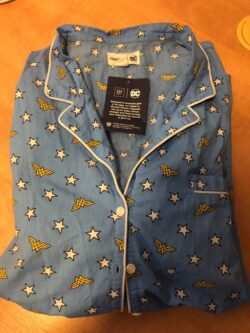
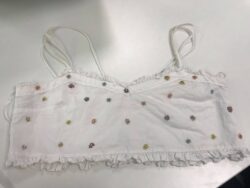
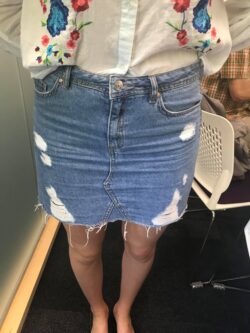
We hit a patch of turbulence midweek as we soon realised that there is no one story, no simple way to contact garment workers or a hotline with someone ready to share the industry’s secrets. One browser tab soon became 20 as the search for answers deepend, and we all took to different methods of exploration. After hitting a dead end with designer brand Balmain, course leader Ian found his inspiration in an ethnography of Mexican suit makers found on Google Scholar… and for Zahra, YouTube became her best friend showing her the riveting process of button production in China. We found that when faced with difficulties, it is important to step back and explore all the angles, even the ones that may not have been obvious at first.
The process of finding out information was conflicting to say the least. There was a battle between us being happy to uncover the tragic stories of the workers behind our fashion garments, and then being sad as we quickly realised that these are the harsh realities people are facing everyday. But feelings of guilt and anger are never going to help the people that we find, empathising with them by attempting to put ourselves in their shoes is the first step towards change. Empathy isn’t just this abstract concept, it is embedded in our everyday experiences, as we found yesterday when browsing in our local Zara store.
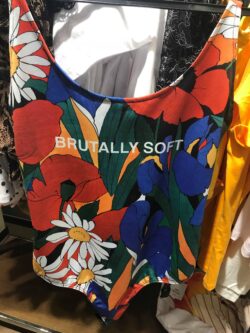
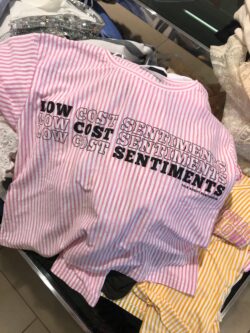
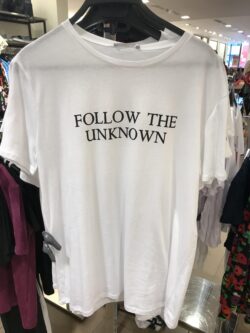
The messages on the t-shirts left us shocked to say the least. Are workers trying to communicate their reality with us… or is this Zara being ironically open with their consumers? We’re not sure what the answers are, but we can’t deny that this course has opened our eyes and changed our mindsets. While we may once have walked past these t-shirts (thinking they are pretty tacky!), we now stop and take in these quotes (or cries for help??). This is everyday empathy! We’re still thinking about how to end this week’s work. To creatively and empathetically respond to our research findings, to the lives we have found in our clothes. This can seem daunting. But just wait for the idea to come. It will hit you when you least expect it! On your way to work, in the shower, even in your dreams… or when you wander into your local Zara store!
Whatever we find in our research… the answer isn’t to stop buying these clothes. That’s what we found out in our Q&A panel this week from garment worker researcher Jay Lingham. She highlighted that to stop buying the clothes we want altogether would hurt garment workers more than it would help them (see the Q&A video for some amazing insights!). Instead, the key is to change the conditions and rights for these workers by doing something else about it. Which brings us to week 3… ‘DO SOMETHING’, where activism is the name of the game!
Bring on next week!
Zahra, Beth and Jemma.
#WhoMadeMyClothes
Carcel* is a new exclusive Danish label built on a business model that challenges the ordinary textile manufacturing and stands up against some of the industry’s worst sins: pollution, mass production, and poor working conditions. The concept of Carcel is a sustainable approach towards materials, season-less garment cycles and a socially responsible production – All the garments of Carcel are made by women in prison.
Written by Christine Lembcke Petersen, Fashion Revolution Denmark
Translated by Johanne Jacobsen
The grey concrete wall and steel fences are a huge contrast to the colourful alpaca cones, which are decorating the fences in the backyard of the prison. The Peruvian accent is a clear sign of location and the women are loudly chatting and joking in the workspace inside the local prison in Cusco. The women are working on industrial knitting machines, during one day they each can make between one and three finished pieces of cloths. They work with the softest baby alpaca locally sourced in Peru. The work conditions in the prison are very different from what bought them there, poverty-related crimes, mainly drug trafficking. But the years behind bars have now turned into a place for new opportunities and a brighter future.
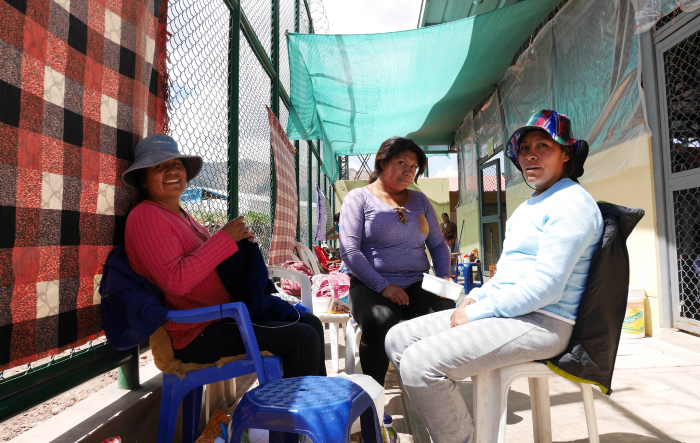
From the prison in Cusco to Vogue cover story
Cusco, Peru, is more than 10.000 km away from Denmark, still, the entrepreneurial women and founders of Carcel had no doubt when they started to set-up their first production in the middle of the South American country. In Peru it’s possible to work with some of the world’s finest and more eco-friendly materials, baby alpaca wool, and at the same time Peru is a country with one of the highest rates of poverty-related crime. These two facts are some of the founding elements for the making of Carcel, and two elements, which have made Carcel a leading brand when it comes to social-fashion-business. And they are already ready to expand. Soon Carcel starts training and production inside a women’s prison in Thailand, as the first international company.
“We have created a new label – which I hope will influence the future fashion industry .”
We have a production that solves some of the challenges in the world and at the same time creates a cool and appealing brand, that proves what fashion is capable of. Fashion is fundamental. It has always been a revolutionary industry, a way to express yourself, but now have become a fragmented industry based on invisible structures and complicated systems – it’s simply out of time”, explains 34-years old Veronica D’Souza, CEO and Founder of Carcel.
She is the brain behind the company, and together with her strong team of women, she shows that it is possible to do things differently in the industry. She has set up a company that embraces the knowledge of the locals, repeats the heritage of crafts, prioritises natural materials and helps women break the spiral of poverty. Being able to improve the industry demands changing behaviours all the way from the producers to the end-consumers, who have been educated to over-consume though constant collections and sales, in contrast to this Veronica D’Souza explains:
“We need to design products, and brands, that can inspire and tell stories that make people more engaged and desired. We can’t be judgemental, negative and neglecting – we have to all move away from that. Instead we should create new opportunities and show the way to change”.
This approach has made Carcel a role model for the fashion revolution, which is moving fast and this trendsetting company has already marked themselves on the global scene. Magazines like Vogue (https://www.vogue.com/article/fashion-runway-carcel-copenhagen-launch) as well as many international newspapers and publications have discovered the unique Danish label. It is very important for Carcel to get this attention – but even more important – this attention is very important for the women in prison.
“It is ground breaking that these women, suddenly have become the cover story on Vogue for being the producers of this cool brand from Copenhagen”, D’Souza points out.
For her, these women’s futures have been fundamental from the beginning. This is stated in Carcel’s garments as each of the styles carry the name of the woman who made it.
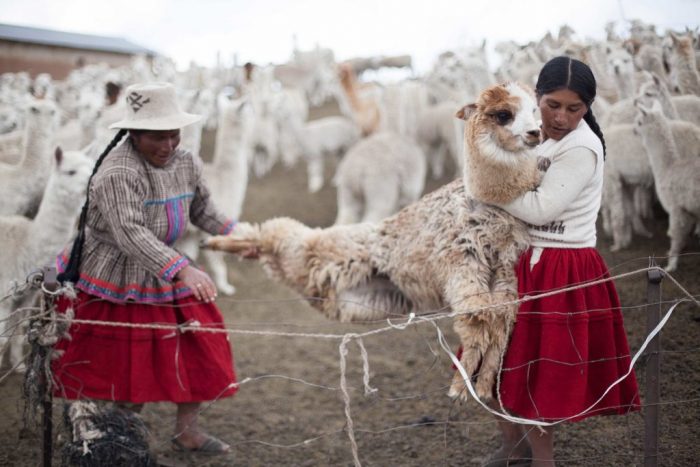
The neckline label supports the story
In the women’s prison, just outside Cusco in Peru, Edith sits on a wooden chair. She is concentrated with the details finishing a navy alpaca jumper. The label that carries her name is added in the neckline and together with the printed card that tells her story, the jumper is ready to be sold.
The fact that each style carries the name of the woman who made it is a very great part of Carcel’s brand identity and it sets high standards for the industry. Also, this has a special meaning for D’Souza.
“A grandmother once told me, that she was always thinking of the person she was knitting for. The craft is like a human wonder. So much love is attached in creating something for someone and as well as receiving something from someone. Today, knitwear is often made in a very technological set-up, where a recipe is added, a button is pushed and then comes out 250 pieces. Without character and without any human hands involved. We do this differently: when you receive your knitwear from us you will also get a printed card illustrating and telling the story of the woman who made it.”
Veronica D’Souza has a background as social entrepreneur and has always worked with an overall focus on improving lives for women, believing that: if you help a woman, you help a whole family and society. The main difference of female incarceration to that of men’s is that women are often in prison for poverty-related crime.
In Peru, drug trafficking is one of the main reasons for female incarceration and what forces them is the will and need to support their children and families. The sentences are usually between 5 and 18 years and while being incarcerated, the women often lose their providing family role. However, this completely changes when the women have the opportunity to get a well-paid job, which makes them able to send their children to school and save up for a crime-free beginning while being in prison.
On top of this, these women are obtaining new skills and they exercise craftsmanship, which they can use in society. For the women, working for Carcel has long term effect and means new opportunities in life. Not only for themselves, but for their entire families.
“We try to provide them with the dignity of creating exclusive designs and products, while also creating better conditions for some of the most marginalised women in the world.”
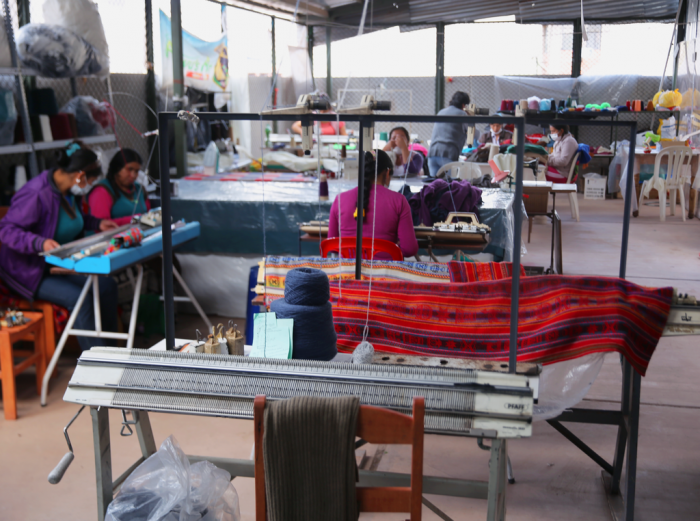
Production based on knowledge and responsibility
Edith is one of the many women who grew through her employment at Carcel in Cusco. And today she even creates her own knitting recipes. She sends back money to her mom who is sick. And her mom has a special role in this story. Edith is an amazing example of the long heritage of knitting tradition in Peru, as this knowledge has given her an extraordinary understanding of the material, which is very essential for the women and the production.
“The women in Peru are a part of a long tradition working with alpaca wool, which, through generations, has made the Peruvians some of the world’s most skilled knitters. This is a strong argument for our quality and the fact that people should buy Carcel because of design and materials – not only to support the women in prison”, points D’Souza and continues:
“We have created our very own production and we’ve asked ourselves: ‘how can we create the greatest production in the world – ensuring good wages, conditions and training?’. And then it’s about goodwill. We are a human-oriented company and it is very crucial that we make long term plans and ensure a healthy environment. We have full responsibility for the production, therefore we are very careful when it comes to up-scaling because we also have the full responsibility getting the products sold. Our greatest responsibility is to keep the women employed and keep them busy. The social approach to sustainability is key to running a sustainable business”.
Carcel is already expanding production to a women’s prison in Thailand and the set-up is the same. Backstage in the company is a lot of resources used on research and development where the team “maps” the world for coming productions based on where high rated of female incarceration meets some of the world’s best materials. Places where the native traditionsl, resources and material expertise, like silk in Thailand, can become the foundation of the production. This set up requires a lot of research and knowledge and being present in the country.
“We start the training inside a women’s prison in Chiang Mai, Thailand, very soon and we will be there every single day for the coming six months. Here we will get to know them very well and we will develop our production framework together. We often say that we have a fully online business and sales channel and maybe the most off-line production possible. The thing is, we cannot just call them – we basically have to be there physically.”
In Peru Carcel has hired a German production manager, who visits to prison every day.
Like the alpaca styles from the Andes, Carcel’s Thailand production will produce seasonless collections, limited batches and will only produce based on demand.
“We produce what we sell, and launch new styles and colours no matter the season. This means that we can produce smaller and more specific batches, which ensures no overstock and waste in the supply chain. Growing trends within sustainable fashion are often focused on materials, which is very important, but we have to re-think season-based collections and start telling the consumer how many products go to waste because they are ‘out of season’”.
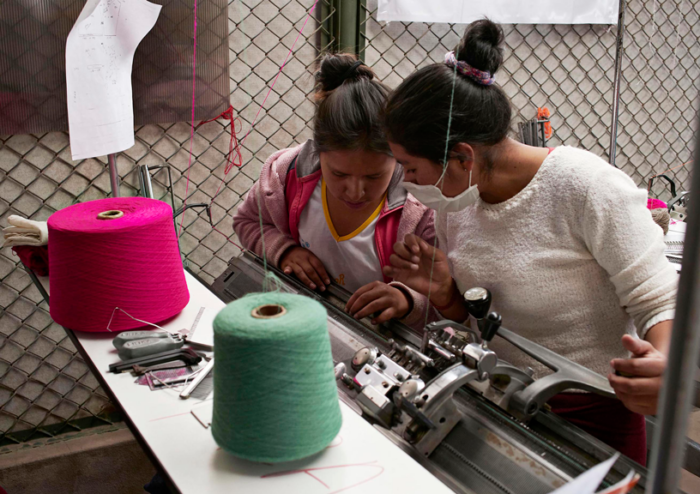
The rise of the fashion-revolution
Veronica D’Souza is optimistic about the future. Both when it comes to consumer habits and buying behaviours and the entire structure of the fashion industry. She’s convinced that we will soon face higher demand for transparency and visible structures and that technology will make it impossible to hide dirty productions, poor CSR-reports and cheap solutions.
“When this happens, it will be a revolution changing everything. As soon as the consumers are able to scan everything and know every process behind a product all companies have to adapt, develop and change dramatically. This will be more revolutionary than any governmental proposal. When the consumers start to ask questions, companies have to be able to answer. Can you then justify for your choices? Let me just say: dear industry – get ready!”
Fashion Revolution Denmark met Veronica D’Souza at Carcel’s creative studio in Copenhagen. We appreciate the interview and look forward to following their future development and we hope that more brands will do the same as Carcel.
#WhoMadeMyClothes
*Spanish for prison
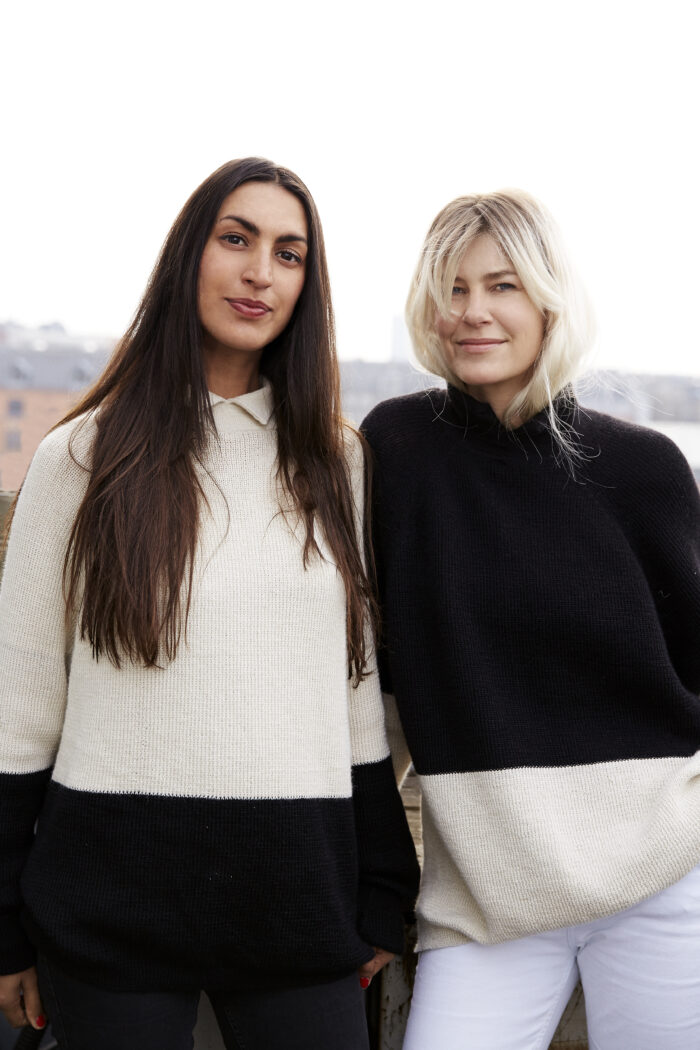
Fair Trade Fashion From India
Secret Projects is a social enterprise working to ensure that women in India receive a fair wage for their work in the textiles industry. It aims to empower women by providing them with access to the global market for their skills and the products that they make: the final link in the chain they previously lacked.
Secret Projects now works with over 300 makers in six different states in India, making clothing a homeware. The makers are the most integral part of the business, and you are in invited to come and meet some of them:
Meet Lissy, our quality control expert. A former quality controller for Fab India, Lissy works in our Bangalore Production Support Unit checking all our products before distribution to ensure they are of the highest quality. We asked Lissy some questions about her work with Secret Projects…
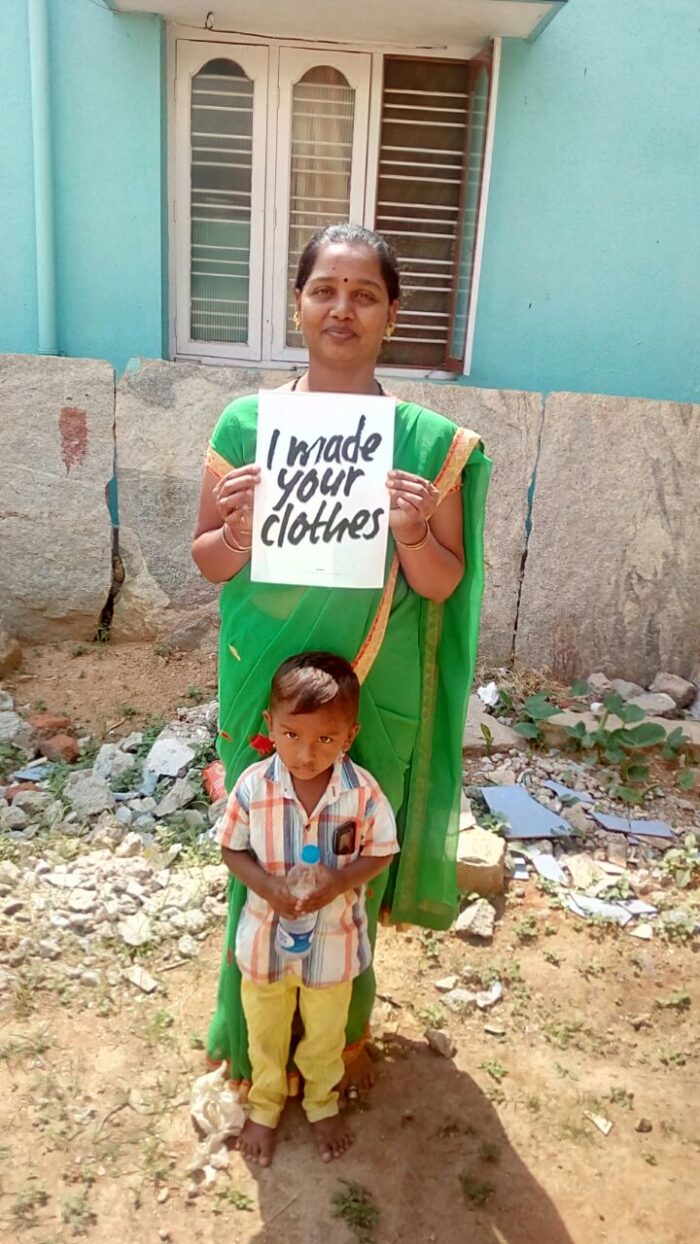
How did you become a quality checker?
I was working in the garment factory a helper for a year. My supervisor found me diligent and so asked me to take on the role of quality controller. I used to do the measurement and final quality check before products were sent out. This job requires following the entire cycle of the production. But I found the work in the factory very strenuous, and I could not manage it and my family at the same time, as I was never given leave. Then two years ago I came across Secret Projects, and I have been working here ever since.
What do you enjoy most about being part of the Secret Projects team?
I am able to work based on a timetable that is convenient for me. I am not in constant fear that I used to have in my previous jobs, as there is very good support.
What impact has being a quality checker with Secret Projects had on you and your family?
Personally, I am happy to be independent. I am able to manage my children’s school fees with the income. This has meant that I have retained my dignity, as I haven’t had to borrow money. I am no longer stressed, and I feel very happy.
How does it compare to other jobs you have had?
My previous jobs were always based on the management’s needs, whereas this job enables me to negotiate my timetable based on my own schedule.
Deepa is a member of our Bangalore Maker Network.
Deepa, how did you start sewing?
I have always had an interest in sewing, and my husband supported me to become a seamstress. I have been sewing for more than 10 years.
What impact has being a maker had on you and your family?
We were living in a very dilapidated house without much space at home. But through my income, we were able to save up and move into a bigger house that could also accommodate my sewing. This means a lot to me. I feel a sense of gratitude for what I have and am able to do. I hope in the future I can scale up my impact even more.
And what about your wider community?
I live in an urban settlement in Bengaluru. Members of my community often find themselves in distressing situations, and many of them are single mothers. There is a high suicide rate, as they often see no future for themselves. I can proudly say that I have been able to train many of them to sew, and they have found a new lease of life. Initially, when I train them, we support each other in the sewing and share the income. Once they are confident enough, they set up their own sewing unit at home, but it takes a long time to be able to save up to own a sewing machine.
I grew up in a small village. People there are very hard working but don’t have access to many job opportunities. I am keen to take Secret Projects to my village and share the opportunity that I have had with other community members. It would make me really happy to be able to do that.
How does it compare to other jobs you have had?
I used to feel hopeless and un-productive when I was staying at home and only doing household chores and staying at home. Now I feel that my life is so meaningful.
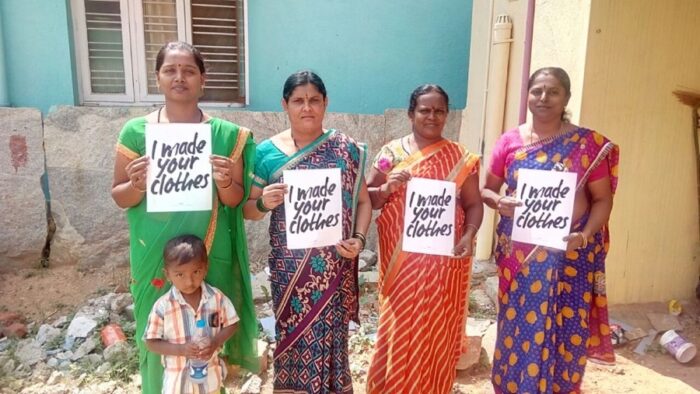
When Ubuntu Made first came to Maai Mahiu, we found a community of children with special needs and their mothers being mistreated and secluded. The stigma and lack of understanding surrounding special needs in Kenya means extremely limited access to essential services such as education, affordable healthcare, physical rehabilitation, and vocational training. This leads to limited opportunities for social inclusion, many social and economic issues for their families, and ultimately limits their ability to live the life of dignity that they deserve. Ubuntu first created the Ubuntu Special Needs Centre (SNC) to combat this stigma and injustice by providing therapy, education, and vocational training to youth with special needs in Maai Mahiu. Caring for these children had been a full-time job for their mothers, so soon after enrolling their children in the SNC their Mums started a new conversation with the founders: “Now that our kids are out of the house, can you help us do something productive with our time?”
The answer was a fashion line, initially imagined to create jobs for these Mums. Today, those same women have formed into a sisterhood revered in the community: women who provide for their families, purchase land, and venture into their own successful entrepreneurial efforts. Which is why it’s not simply about creating jobs.
“Plenty of people have been given opportunity, but they don’t feel empowered,” explains Zane Wilemon. “There’s something magical about our culture and creating a job within that; it then empowers the whole community.”
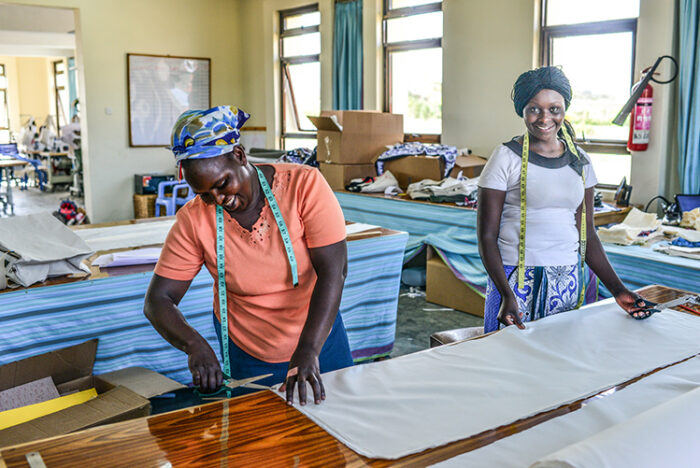
This conviction is what led Ubuntu Made to design and launch the Afridrille. At the intersection of customization and sustainability, the Afridrille merges customer experience with genuine connection. Based on the popular espadrille style shoe, their version marries modern on-demand manufacturing technology to an artisanal production process. Customers can choose from an incredible array of styles, choosing from a range of canvas colors, printed patterns, pattern colors, and African kanga linings. There are over 23,000 different design options, so each pair represents the personality of the individual customer. That means that each pair must be made to order, not produced in bulk in advance.
The key to making this process work is technology and expertise provided by Zazzle, a Silicon Valley company that makes customizing anything a possibility. They’ve applied their cutting-edge technology to enhance the customer design process and have dedicated hundreds of hours of senior staff time to help Ubuntu develop the new product, in a collaboration that re-defines what true “corporate social responsibility” represents today.
“At Zazzle we’re thrilled to extend our platform and technologies to Makers who craft products with soul, made from the heart. And there’s perhaps no better example of this than the Ubuntu Mums,” explains Jeff Beaver, Zazzle co-founder and Chief Product Officer. “Through our partnership with Ubuntu we’ve learned that providing economic opportunity is exponentially more impactful, and sustainable, than handouts or charity. These Afridrilles are more than just awesome shoes, they are a celebration of the human spirit, and every single pair empowers these Mums, their special needs kids, and their larger community. What’s better than that?”
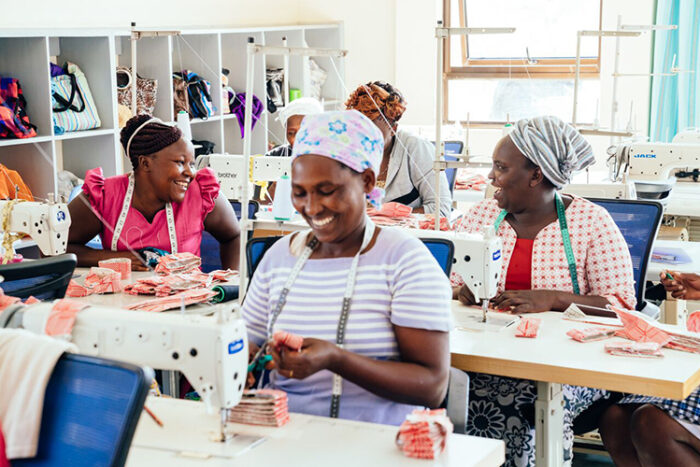
Crowdfunding the product launch via Kickstarter allows Ubuntu to build up production capabilities, expand the skillset of their ‘Maker Mums’, and perfect a complex operating process with the support of the Kickstarter community.
“Never underestimate the power of the entrepreneurial spirit and what can happen when people collaborate on something bigger than ourselves,” says Wilemon. “With the support of Zazzle and an eager crowdfunding audience, together we will scale up production and empower thousands of women and families in Kenya.”
At Ubuntu, empowerment means more than providing handouts or even a sustainable job. It means offering people a chance to create their own lives and livelihood. Ubuntu Made pays above-market wages to all of our employees – up to 4 times as much as they would have been able to find elsewhere in the community. We also provide health insurance to all our employees and their families, a rarity in Kenya where less than 20% have access.
The job skills our Mums learn and the money they earn empower them to buy homes – more than half of Ubuntu employees are homeowners compared to 1% nationwide. They are able to provide for their families, and sometimes start their own enterprises. They earn more than money; they earn respect in their community. Together, by providing disabled children with the healthcare and education they need, we empower them to realize their fullest potential.
That’s empowerment. That’s Ubuntu in action.
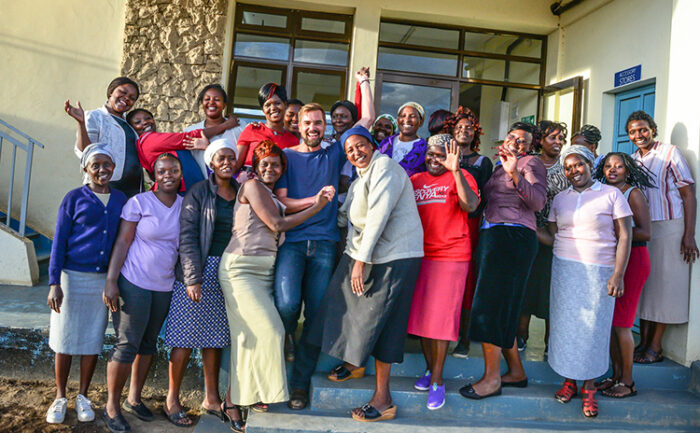
As part of Fashion Revolution’s collaboration, london based designer Bethany Williams joined Indian label Tilla by Aratrik Dev Varman for an explorative journey into the heart of North East India Tripura region, to meet local weavers and discover forgotten skills and crafts methods.
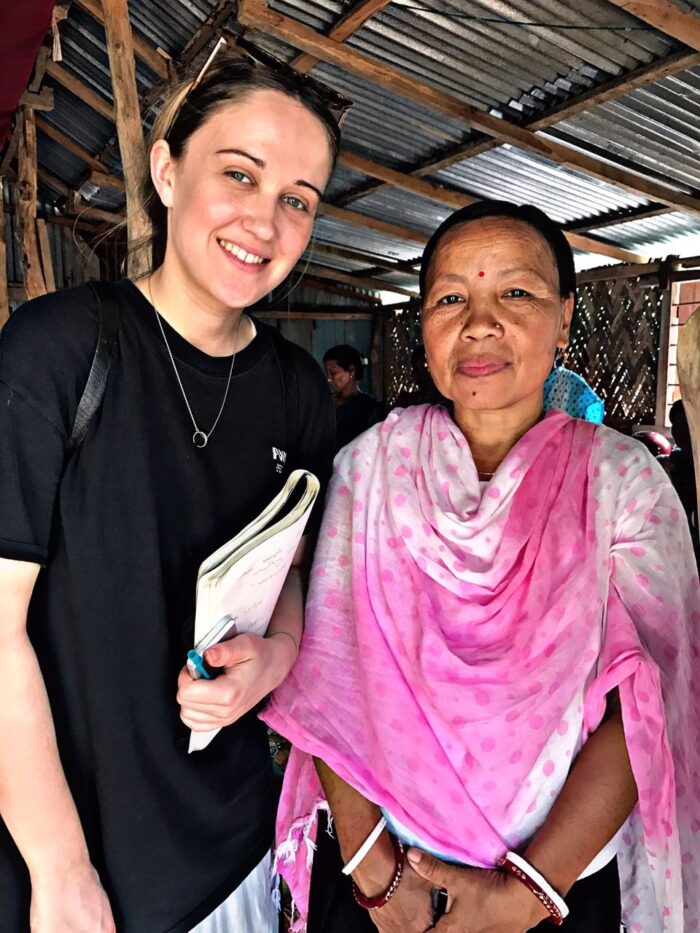
The Tripura weavers use a unique strap loom which is placed on their back, to weave thin pieces of cloths which are then used to create traditional clothing.
The weavers live in separate tribe, each with its own weaving signature, in one of the remotest parts of the continent, and their craft has seldom been used outside the region.
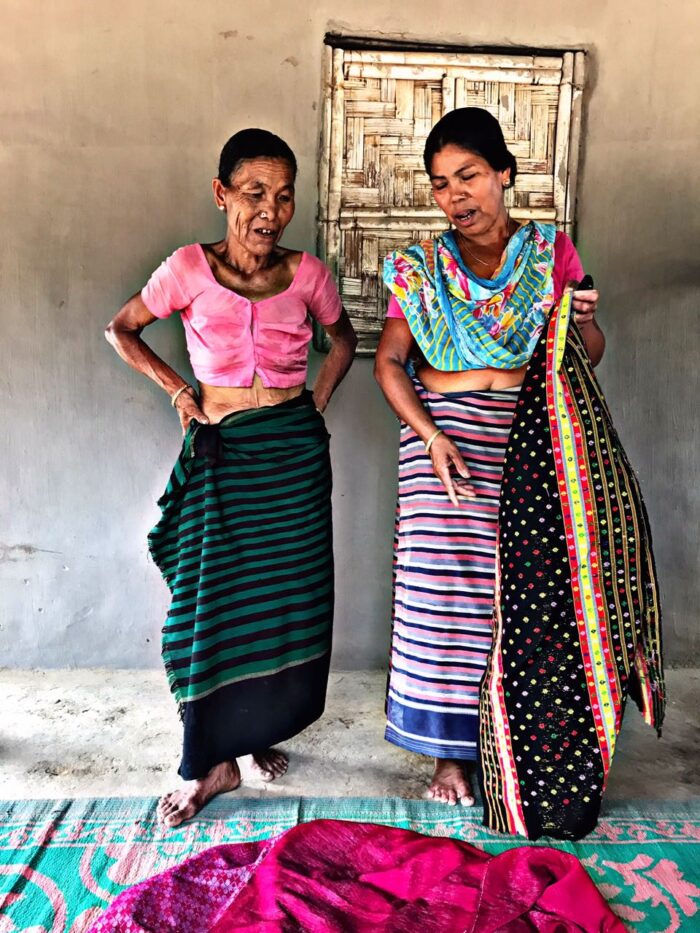
Interestingly, while in the past all yarns were spun from cotton and dyed with vegetable dyes, in recent times the artisans have been using cheaper and more readily available synthetic yarns, which have somehow distorted the design of the cloth by adding more vibrant colours.
Designer Aratrik Dev Varman, who’s family originates from Tripura, is interested in reintroducing the use of naturally dyed yarns into some of the communities in the future to preserve the original beauty of the woven cloth.
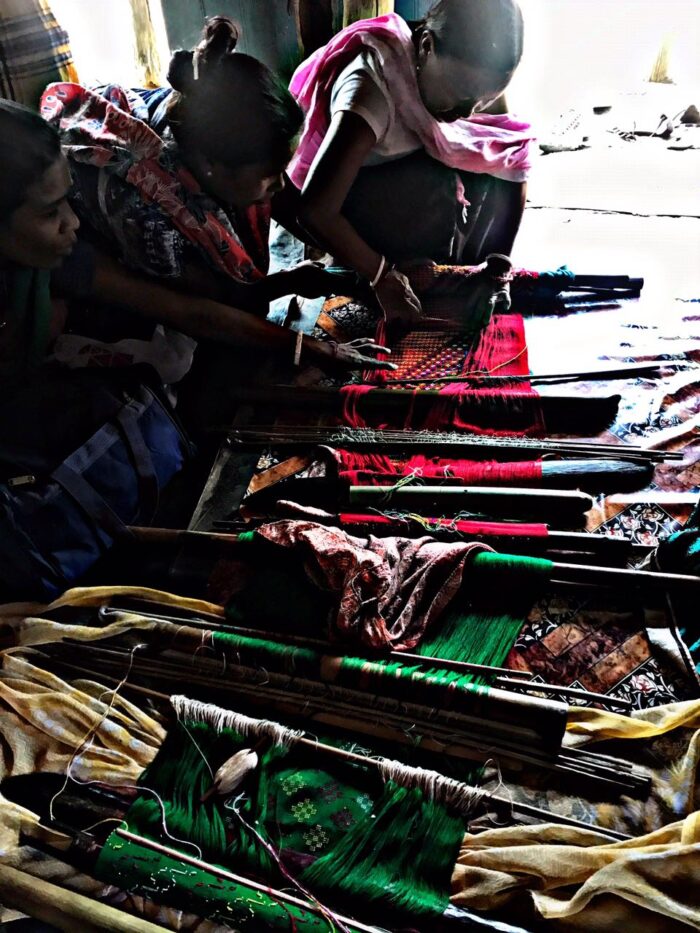
Artisans in Tripura are very isolated and not in a position to upscale production at this point in time, making this journey a creative hotbed of potentials – Bethany and Aratrik are both emerging designers producing bespoke collections as well as being interested in design systems and alternative solutions, so this collaboration will pave the way for a different approach based on quality rather than quantity, in conversations rather than commercial products.
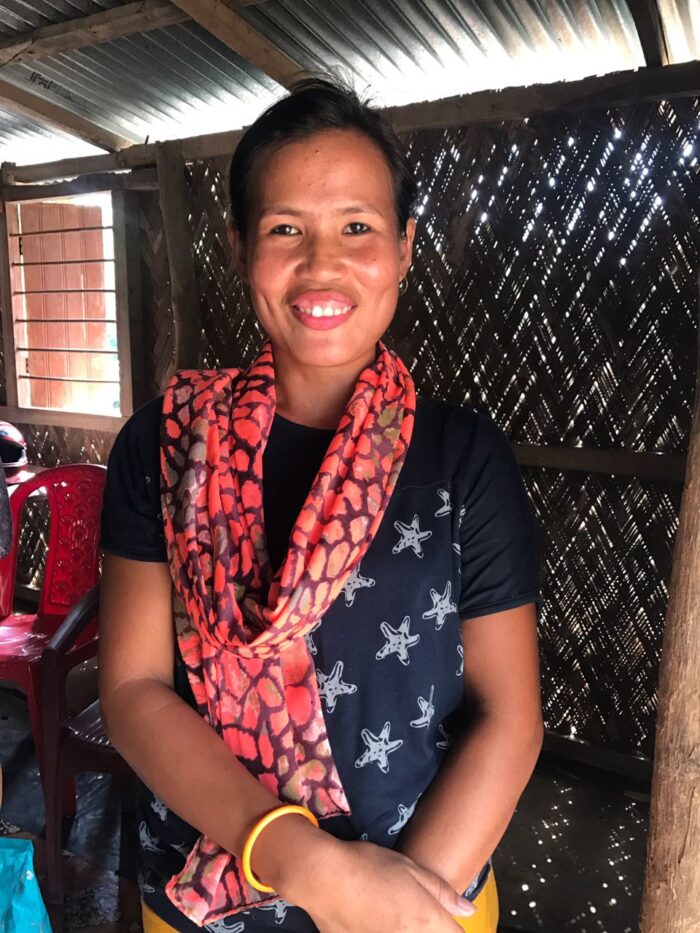
The journey will be filmed by emerging Indian filmmakers Storyloom (who specialise in capturing artisanal processes and craftspeople) and the resulting imagery, video diary and designs from Bethany and Aratrik will feature in next January’s Lakme Fashion Week.

Telegram from Tripura will pilot a new way to encourage young designers globally to interact with their own unique heritage and understand how to be inspired by it, how to help preserve it, and above all to be of use and service to local crafts people by immersing themselves in local traditions.

by Carry Somers and Orsola de Castro
On 8 May 2013, the two of us wrote an email which began ‘like many, we have seen the terrible tragedy in Bangladesh as a call to arms and feel that we should build on the momentum which has been generated. An annual Fashion Revolution Day would be a way to ensure that these deaths are not in vain, show the world that change is possible, and celebrate those involved in creating a more sustainable future for fashion’.
The responses to our request for involvement fell into two quite clear camps. Many responded with no hesitation; one email we received back just said yes, yes, yes! Some expressed a degree of hesitancy. Do we really want to call for a revolution in the fashion industry? How about calling it Fashion Evolution? Although the two of us are very different in very many ways, we are remarkably similar in others: we are both entrepreneurs, both pioneers in our respective fashion spheres, both risk-takers and both have a fundamental belief in the power of people to effect change given the right motivation. We had no doubt that a revolution was needed – a radical and pervasive transformation of the way in which the fashion industry operates.
We were right to push for revolutionary change. People were ready to listen.

Looking back at the minutes from our very first meeting, we had real clarity around how we would communicate our message in order to accelerate change: we need one big aim; make it as visible as possible; keep it strong; make it positive without ignoring the negatives; make it inclusive; talk about how the relationship with the people who make our clothes has broken down and connections need to be reestablished. Finally, we needed to give people a question they can all ask: who made my clothes?
This clarity of vision, coupled with the right channels of communication, has made Fashion Revolution the biggest fashion activism movement in the world. We have teams in over 100 countries and there are well over 1000 events happening all around the world this week.
Fashion Revolution is first and foremost about people; it is about making visible the connections between everyone in the fashion supply chain as a first step towards change. We’ve made citizens realise that their own wardrobe is in the fashion supply chain, about three-quarters of the way between the cotton seed and recycling the fibres. Everything we do has an impact on that supply chain. We reshape the fashion industry, the lives of its workers and its resources, every time we buy or dispose of an item of clothing.

Fashion Revolution was set up for the love of people, in memory of those who died at Rana Plaza, those who have died in countless other fires and building collapses in garment factories around the world, and those who are still losing their lives every week so we can wear beautiful clothes. That love of people continues to shine through. We are not about celebrities. We are not about power and success. We are about humanity. Fashion is about instant gratification. We are about the long term gratification that comes from knowing entire workshops, factories and communities are slowly becoming visible. We see empowerment not as a celebrity wearing a feminist slogan T-shirt on instagram, but as the workers who made that T-shirt being given a voice through the garment worker diaries project. When we inaugurated a new hashtag #Imadeyourclothes in 2016, someone commented on social media that it represented ‘the most joy I’ve ever had from a hashtag!’
 We’ve given everyone tools to take part – there are online packs for brands and retailers, producers, makers and factories and educators. For fashion-lovers, as well as a Get Involved pack, there is our How to be a Fashion Revolutionary booklet, our fanzines Money Fashion Power and Loved Clothes Last, our guides to the #Haulternative and Love Story challenges. There are endless ways in which everyone can take part from changing your attitude, to changing your wardrobe, to changing your world. We’ve encouraged millions of people to Be Curious, Find Out, and Do Something. We don’t have all the answers. We want to encourage everyone to ask questions of their favourite brands, to do their own research, to use their power as consumers to hold the industry to account for its actions and impacts.
We’ve given everyone tools to take part – there are online packs for brands and retailers, producers, makers and factories and educators. For fashion-lovers, as well as a Get Involved pack, there is our How to be a Fashion Revolutionary booklet, our fanzines Money Fashion Power and Loved Clothes Last, our guides to the #Haulternative and Love Story challenges. There are endless ways in which everyone can take part from changing your attitude, to changing your wardrobe, to changing your world. We’ve encouraged millions of people to Be Curious, Find Out, and Do Something. We don’t have all the answers. We want to encourage everyone to ask questions of their favourite brands, to do their own research, to use their power as consumers to hold the industry to account for its actions and impacts.
We called for a revolution at the right time as the infrastructure of the industry, and the industry itself, have shifted in the past five years. We were right to call for a revolution because both ideas and practices had to be refashioned, a new paradigm was needed, and we can see this starting to happen. A revolution means change and change represents freedom. There is excitement around this change; it no longer feels dull nor scary, but represents a creative space in which to operate. Everyone within this space at this time can be considered a pioneer, and pioneers don’t have references – they make their own.
Five years on, a Fashion Revolution is taking place. Not fast enough, not enough engagement throughout the industry, but make no mistake it is happening. It’s bubbling up through the cracks and crevices, it can no longer be submerged. In another five years it will be a raging torrent, reshaping everything in its path. If you aren’t part of this movement, you will be swept along by it (or perhaps even swept away by it) as the structure of the fashion industry is revealed and revolutionised.
We are Fashion Revolution. Join us.
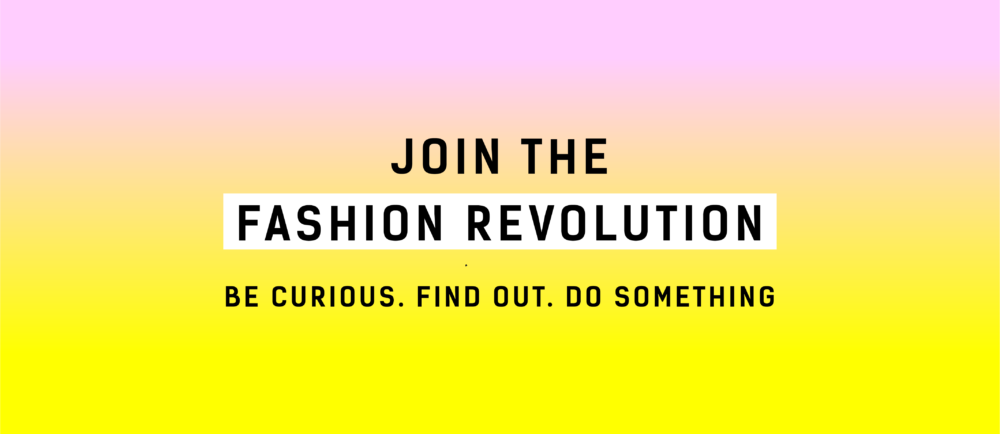
In her own words Nisha is honest, hard working and devoted. Nisha is a 28 year old mother of one. She is also a sewing machine operator at the Echotex manufacturing facility in Dhaka, Bangladesh. 6 months in into her role, the biggest challenge she’s faced is picking up the necessary skills to meet the quality standards required to produce the first NINETY PERCENT collection of premium basics. Every working morning, she says goodbye to her 5 year old son and leaves her home in Shafipur, Gazipur district to catch the rikshaw to Dhaka and make your clothes.
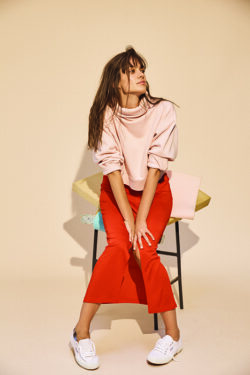
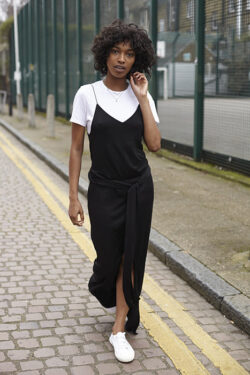
Greatest Achievement:
Being a kind mother to my five year old son is my greatest achievement. It’s hard to find the words to express my love for my boy but I feel heaven’s peace when he runs into my arms for a hug. It makes me so proud to see my tiny boy keep himself neat and tidy and behave well around friends and neighbours.
Work highlight so far:
Completing NINETY PERCENT collection 1 is my greatest career achievement. It was a big challenge for me to make sure the finish was first class. NINETY PERCENT is exclusive product so I had to work hard to assure the quality. I learned a lot making collection 1 and I hope these skills will serve me well in future.
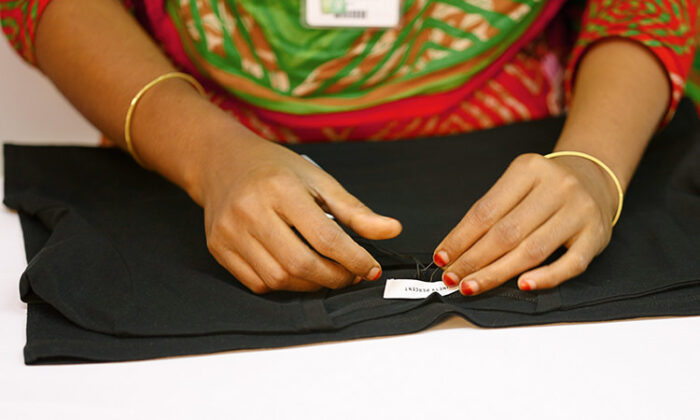
Best memory:
Catching fish as a child. I fished a pond near home in my native village of Bishnupur in the Gaibandha District. The best time to fish was late autumn when the water level was down and it was easier. All the boys and girls fished together then our mothers’ cooked the fresh fish for us.
Favorite place:
Cox’s Bazar – it’s the world’s largest natural sea beach. It’s an amazing feeling by the sea with the breeze and the sand. I’ve never seen any other beaches but I’m sure Cox’s Bazar is the best. Last winter the whole family went there, all the hotels and motels there are world class for all types of foreign and local tourists.
Best life advice?
My parents advised me to always be truthful. I’ve followed this advice at every stage of my life. Wherever I have been or done I have always been truthful. Actually, I think that’s my greatest achievement. It’s advice I passed on to my child – I think that’s why he is so well behaved.
The one thing you can’t live without?
My husband is my life partner – our marriage was arranged by our families. His name is Ashraful Alam and we’ve been living for 10 years. He feels my happiness and pain and tries to help me solve problems. We have a deep understanding of each other – our eyes can read each other’s hearts. My man is wonderful. He always takes care of me and shares what he thinks.
Where do you see yourself in 5 years?
In five years time I wish to be a team-leader. First of all I want to be the best most efficient employee I can – this will see me rise. My supervisor Mr. Azizul’s motivates me and boosts my self confidence. My first day in the job was a mixture of sadness, fear and happiness. I was sad because I thought I would be busy with no more free time to do what I wish. I felt fear because I didn’t know the job or the environment. I felt happy thinking about the money I would earn. Now I wake up in the early morning to complete my family tasks then say bye to my boy and leave for work. When I’m there, I complete my tasks, then return home at 5.30 pm to focus on my family again.
When are you happiest?
I become happiest outside of work when I’m with my family. We spend our time laughing, gossiping and doing lots of things. I love to play chess with my husband and cook – especially mutton curry. Before we go to sleep we always have cup of tea together at the end of the day. Making the tea for everyone is a special moment for me.
